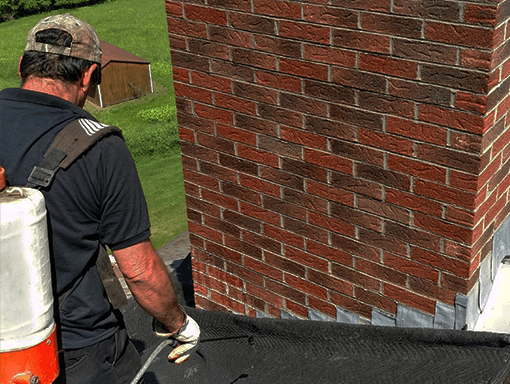Identify the Source of the Problem
To waterproof brick, stone, and masonry structures properly, it is essential first to identify the source of the moisture intrusion. It is crucial to identify the source of moisture, whether it is due to rain, condensation, or any other cause, to find a solution. When water infiltrates into brick, stone, and masonry, it can lead to several problems. These include the growth of mildew and the formation of efflorescence, which is a white, powdery substance that appears on the surface of brick walls. Waterproofing is an effective way to eliminate moisture penetration and limit contaminant growth.
Waterproofing is ideal for all masonry surfaces, including concrete, cinder blocks, brick, and terra cotta. Masonry waterproofing can be applied to bare masonry, brick, and cob (a mix of clay, straw, and sand). When applying, be sure the surface temperature is above 50 degrees F, and avoid wetting the substrate during application.
Assess the Substrate
The substrate refers to the primary layer of a building or structure. It can be made of rock, soil, or commercially designed building materials for specific construction purposes.
Before waterproofing, it is essential to ensure that the substrate has proper breathability. It will help your brick walls ‘breathe,’ allowing the dampness to evaporate and prevent further damage.
To determine the permeability of your substrate, it is recommended to test it with a RILEM tube. It will allow you to see if the waterproofing product will be effective.
It is also important to note that most waterproofing products require full adhesion to the substrate, particularly below-grade applications. Without this, the waterproofing membrane can infiltrate the substrate and lead to failures in the future. Adhesion tests should be completed in the laboratory and on-site before applying the waterproofing material. It will help to avoid failures caused by delamination in the future.
Create a Plan of Action
Many types of masonry can be used to build houses, including granite, brick, and cob (a mix of clay, sand, and straw). Masonry waterproofing is the process of protecting brick and other masonry from water penetration. It includes everything from limiting mildew growth to preventing structural damage.
To protect brick walls, it is necessary to apply a water-repellent treatment. These creams soak into the surface, lining the capillaries of the brick and creating an invisible barrier against moisture. They can do this while allowing the wall to breathe, which is essential for the overall health of the masonry.
Before applying a masonry waterproof coating, the surface should be clean and dry. The surface must be free of grease, oil, form-release compounds, and paint. It is also essential to ensure that the masonry is not cracked, spalling, or damaged in any way.
Apply the Solution
Waterproofing brick and masonry walls provides an effective first line of defense against moisture intrusion. It helps to prevent several issues, including deterioration, damage, and structural failures. It also eliminates the “gritty feel” that brick or stone can have in some environments and improves overall interior and exterior appearance.
Water-repellent treatments such as silicone resins and silanes are suitable for brick surfaces. These products are easily applied with a brush, roller, or sprayer and can provide high levels of protection. They typically dry clear and do not alter the appearance of the substrate.
Before application, the masonry surface should be free of grease, oil, form-release compounds, and old paint. Applying the waterproofing treatment on a slightly damp surface is best, but it should be scorched and free of efflorescence before drying.


Social Media